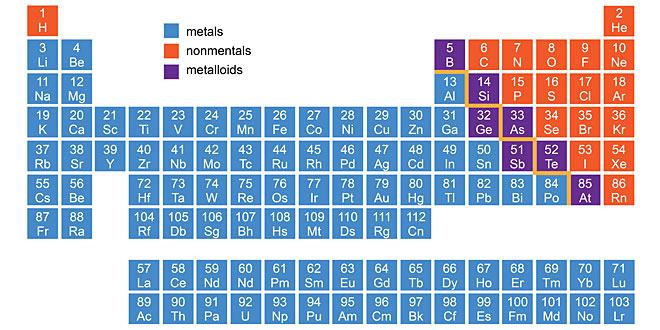Question: What is the difference in fog and smoke?
Answer: Fog is a colloidal solution with liquid dispersed in gas.
Smoke is a colloidal solution with solid dispersed in gas.
Question: If 20g of salt is present is 220 g of solution, calculate the concentration of solution
concentration of solution = Mass of solute / (Mass of solute + Mass of solvent)×100
mass of solute = 20g
mass of solute + solvent = 220
∴ concentration of solution = 20/220×100
= 0.09%
Question: 1. Define solution.
2. Give different types of solutions with one example each.
Answer: 1. Solution: It is a homogeneous mixture of two or more substances. It consists of solute and solvent.
2. Different types of solution:
- Based on solvent: Aqueous and non-aqueous Aqueous solution has water as solvent (sugar + water) Non-aqueous solution has some other solvent but not water. Example, (sulphur + carbon disulphide)
- Depending on the amount of solute dissolved in solvent: Dilute solution and concentrated solution
Dilute solution-Less amount of solute particles are present in a solvent.
Concentrated solution:Amount of solute present in its maximum capacity in a solvent. - Amount of solute present in its maximum capacity at a given temperature: Saturated and unsaturated solution.
- Saturated solution: It is a solution in which no more solute can further dissolve in a given solvent at a given temperature.
Unsaturated solution:It is a solution in which some more solute can dissolve in a solvent at a given temperature - Depending on the size of solute particles
Question: How can you separate the following mixtures?
(a) Sand + iron (b) Cream from milk
(c) Salt + water (d) Ammonium chloride + NaCl
(e) Copper sulfate + water (f) Rice and dal (uncooked)
(g) Gases from air (h) Petrol and diesel from crude oil
(i) Drugs from blood (j) Acetone from water
Answer:
- Sand + iron – magnetic separation
- Cream from milk – centrifugation
- Salt + water – evaporation
- Ammonium chloride + NaCl – sublimation
- Copper sulfate + water – crystallization
- Rice and dal (uncooked) – hand picking
- Gases from air – fractional distillation
- Petrol and diesel from crude oil – fractional distillation
- Drugs from blood – chromatography
- Acetone from water – distillation
Question: Anil’s sister accidentally added some water into the bottle containing olive oil and she was afraid of the scolding. Anil helped his sister and separated the water from olive oil using bottle as separating funnel.
- What is the principle of using and working of separating funnel?
- Suggest two separation techniques used to separate liquid mixtures.
- What value of Anil is seen in the above case?
Answer:
- The principle of separating funnel is difference in the densities of two liquids.
- Liquid mixtures can be separated by distillation and fractional distillation.
- Anil showed the value of helping, caring and responsible behaviour.
Question: Preeti saw a labour entering into the sewage manhole immediately after removing the lid. She promptly stopped the labour from entering into the manhole and told him to wait for some time before he enters into it.
- What will happen if the labour immediately enters into the manhole for cleaning) after removing the lid?
- Name main gases that are released from the manhole.
- What value of Preeti is seen in the above act?
Answer:
- If the labour immediately enters the manhole on removing its lid he would die due to suffocation and inhalation of poisonous gases which are compressed and released by sewage.
- Gases released from the sewage manhole are methane, carbon dioxide and hydrogen sulphide.
- Preeti shows the value of moral responsible behaviour and aware citizen.
Question: Prasanna wanted to buy a deodorant from the shop. While buying a bottle he felt that it was slightly heavier than usual deodorant bottle that he purchased every time. He read the weight mentioned on the bottle and told the shopkeeper to weigh the same. He found the bottle was heavy and on opening the deodorant bottle he found it half-filled with water. He complained the matter to the consumer authority.
- Define density.
- Apart from water what is the other substance that some shopkeepers add into the deodorant.
- What value of Prasanna is reflected in this act?
Answer:
- Density of any substance is defined to be the mass of the substance per unit volume.
- One can add some cheap gases or compressed air in the deodorant bottles.
- Prasanna showed the value of being having leadership quality, rightful, aware and responsible citizen.
Question: Rita’s father always got his vehicle checked for pollution control. He got it tested for the aerosol if released by his car. He also uses unleaded petrol and makes use of public transport wherever possible. He sparingly use his car.
- What is aerosol?
- What happens when smoke released from vehicle mixes with fog?
- What are the values of Rita’s father is reflected here?
Answer:
- When the solid or liquid is dispersed in a gas it is called aerosol e.g. smoke.
- When smoke mixes with fog it forms smog.
- Rita’s father is an aware citizen, environmentally concerned and dutiful.
 Class Notes NCERT Solutions for CBSE Students
Class Notes NCERT Solutions for CBSE Students



